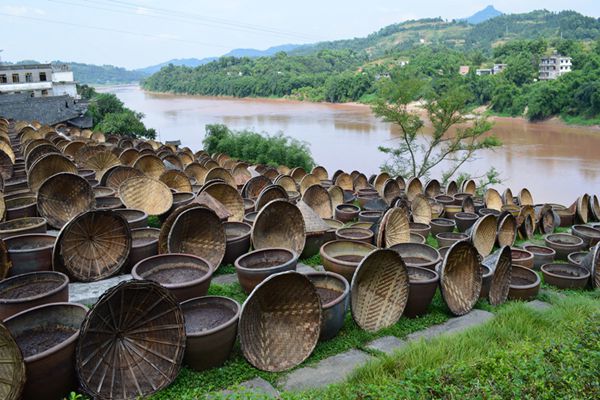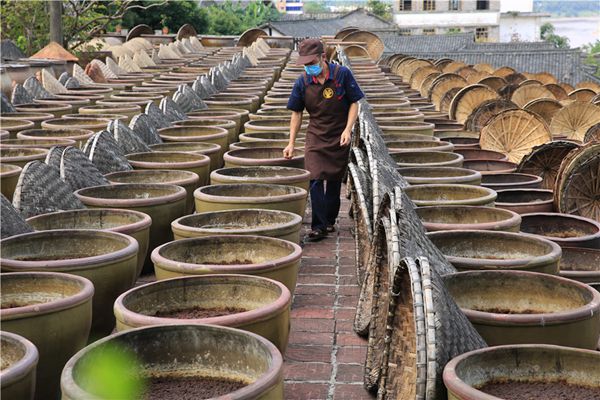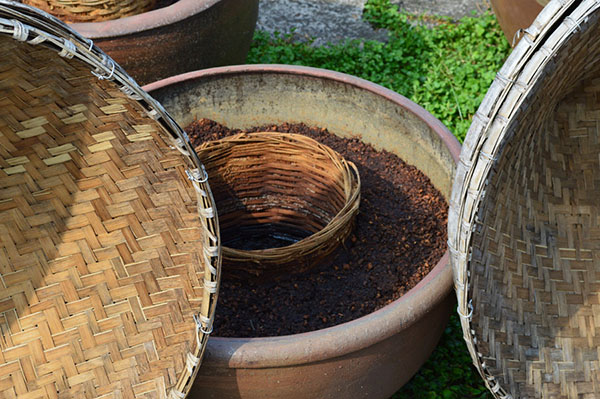
The factory’s location along the Chishui River ensures ideal moist conditions for the fermentation process. [Photo by Jiang Wanjuan/chinadaily.com.cn]
As a traditional Chinese condiment, soy sauce was invented by the Chinese over 2,000 years ago and is still used in Chinese cooking every day.
However, modern people tend not to give much thought to the making of soy sauce, as the traditional brewing method, or fermentation, has long been replaced by a chemical process, which is much more productive.
Little known to the outside world, a century-old factory in Xianshi town, Sichuan’s Luzhou city, is still using the natural fermentation method to produce its products. That means simply exposing a soybean mixture in big jars to the sun, a method that takes up to three years to complete.

A worker checks the quality of the fermented soybeans in jars at the Xianshi Jiangyou soy sauce factory, in Luzhou city, Southwest China’s Sichuan province, Aug 6, 2015. [Photo by Zhang Ji/For chinadaily.com.cn]
Established in 1893, the company, Xianshi Jiangyou (jiangyou means “soy sauce” in Chinese), has been brewing soy sauce for more than 140 years at its original location along the Chishui River.
Water, salt, wheat and soybeans are the ingredients needed to make soy sauce. Beneficial natural bacteria and old brewing containers make natural yeast for the fermentation process.
The aging process allows the beans to naturally produce oil, resulting in a mellow and full taste and well-balanced aroma, compared with the harsh flavor of non-brewed products. However, natural fermentation takes more than 10 times’ longer than the modern chemical process, known as hydrolysis.
The factory has a total of 6,000 jars, and about 2,000 jars of soy sauce can mature each year, producing only 200 to 300 tons yearly, according to Ma Chao, chairman of the factory.

It takes up to three years for the soybean mix to produce oil. [Photo by Jiang Wanjuan/chinadaily.com.cn]
The factory has been through many ups and downs in the past, amid market pressure, he said.
